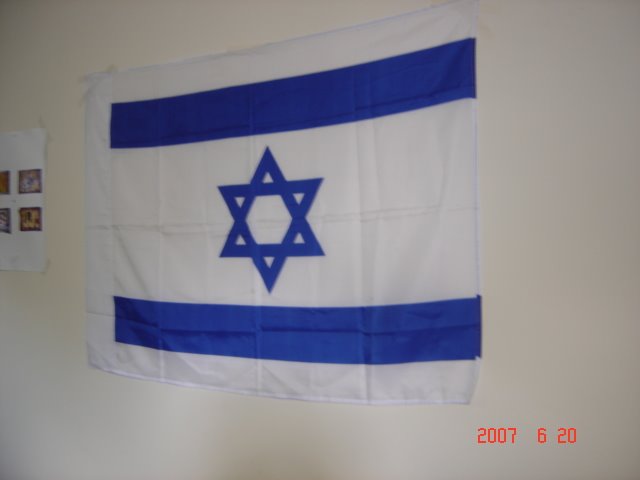
By Patrick Clawson and Mehdi Khalaji
July 20, 2007Reports that Ayatollah Ali Meshkini has either died or is on the brink of death shed light on the nature of power in Iran. Meshkini is speaker of the Assembly of Experts -- a body that, despite its traditionally minor role in Iranian politics, is constitutionally empowered to not only elect a new Supreme Leader if the post becomes vacant, but also to dismiss a sitting leader. Current Supreme Leader Ali Khamenei cannot be pleased that this body may now be headed by deputy speaker Ali Akbar Rafsanjani, a former president known to be a wily comeback artist. Although Khamenei has taken full advantage of the constitution to make the Supreme Leader the ultimate arbiter of Iranian politics, that could change depending on his health and Rafsanjani's scheming.
Khamenei as Supreme Leader
When revolutionary leader Ayatollah Ruhollah Khomeini died in 1989, a backroom deal brokered by Rafsanjani put then-president Khamenei in his place. Khamenei's religious credentials were widely ridiculed at the time. He was remarkably weak in his early years; real power was in the hands of new president Rafsanjani, to Khamenei's disgust.
But by the mid-1990s, Khamenei had consolidated control. His strength grew over the years to match the broad reach given to his office by the constitution. Today, appointed prayer leaders in each city and representatives in each major government office give him eyes and ears everywhere. He selects the members of the Guardian Council, which must approve all legislation passed by the parliament, or Majlis. He closely controls the country's radio and television networks, whose director he appoints. He also appoints the heads of the clerical court and the regular judiciary, who in turn appoint the nation's other judges. And he is head of the seminary system (rais-e howzeh).
In addition, Khamenei controls the key instruments of national and regime security: the Islamic Revolutionary Guard Corps (IRGC), the politically active Basij paramilitary, and the KGB-like Ministry of Intelligence and Security (charged with security operations both at home and abroad). Nuclear negotiations with the West are conducted by his representative with little or no input from the Ministry of Foreign Affairs.
Khamenei is widely thought to be in poor health, though it is not clear whether he has any life-threatening conditions. He was badly injured in a 1980 assassination attempt in which he lost use of his left arm. He sometimes disappears from public view for long periods, fueling rumors that he suffers from depression. It should also be noted that one stereotype of traditional clerics is that some use opium.
The Assembly of Experts
The U.S. government describes the Supreme Leader as an unelected position. This contention, while incorrect in theory, is true in practice. The constitution empowers the Assembly of Experts to choose the Supreme Leader for a seven-year term. Yet, according to prominent dissident Mohsen Sazegara, "members of the Assembly must pass muster with the Guardian Council, whose members were appointed by the leader. That explains why no member of the Assembly has ever said anything critical of the leader in public session" (see "
Article 111 of the constitution empowers the assembly to dismiss the Supreme Leader whenever he "should become incapable [of] fulfilling his constitutional duties . . . or if any time it should be known that he did not meet some of the qualifications mentioned." The assembly even has a committee for this purpose -- according to Towhid Moharami, writing in the assembly's quarterly journal Hukumat-e Islami (Islamic government), this body was reorganized as the "Constitutional Article 111 Investigation (tahqiq) Committee" in 2004, with seven members chosen by the assembly (the names are not announced, but cannot include leaders such as the speaker or his deputy). According to Guardian Council member Mohsen Esmaeili, the committee meets every two weeks. This suggests a rather active body. Even if the seven clerics only discuss the weather, the fact that they meet biweekly reminds Khamenei of the check on his power.
For years, this check has seemed only theoretical. But the Rafsanjani factor may change that. Although Mahmoud Ahmadinezhad handily defeated him in the June 2005 presidential elections, Rafsanjani was unbowed as he ran for election to the assembly in 2006. In a long interview with Hukumat-e Islami that summer, he violated a taboo by implicitly criticizing Khamenei: "It is not obvious that the most appropriate person is always elected [as Supreme Leader]. It is possible that in the election a mistake could be made." Then, during the December election, he received the most votes -- a result widely seen as a slap to the hardliners (Ahmadinezhad's Tehran slate performed miserably in the concurrent municipal elections). Rafsanjani was then elected deputy speaker while the top spot was held by the politically inactive and often ill Meshkini.
Rafsanjani excels at turning obscure posts into power centers. As Majlis speaker in the 1980s, he became a central powerbroker between the feuding president (Khamenei) and prime minister (a post since abolished). Ayatollah Khomeini subsequently created the Expediency Council to resolve differences between the many power centers in Iran's complicated government structure, later enshrined in the constitution. Although the council was initially weak, it acquired a large, active staff and a new headquarters next to the Supreme Leader's offices once Rafsanjani stepped down as president in 1997 and was appointed council chair. Intriguingly, the council has the main say in what happens while the Supreme Leader's post is vacant, at least until the Assembly of Experts elects a new leader.
Rafsanjani took full advantage of his success in the December 2006 assembly election to assert himself on the national stage. In early 2007 -- a period when Ahmadinezhad was being criticized in the conservative press for endangering Iran's national unity and security by acting too combatively, and when reports were circulating of Khamenei's ill health (e.g., Fars News Agency stated that he was hospitalized briefly) -- Rafsanjani began acting as if he were the real powerbroker. In February, he made a widely publicized round of visits to top ayatollahs in Qom. Rumors flew that, in addition to seeking their general support, he was sounding them out about reducing Khamenei's power. Then, at the first meeting of the new assembly, he stated, "The Fourth Assembly of Experts could exercise its supervisory powers more than before."
Khamenei came roaring back, however, with several fire-breathing major addresses around the Nowruz spring equinox holidays. The Supreme Leader reaffirmed the hardline stance on the nuclear program and asserted that any talks with the West had to be conducted under his strict control.
What to Expect Next, and Implications for the West
If permitted to remain at the head of the Assembly of Experts, Rafsanjani would pose a persistent and open challenge to Khamenei. Accordingly, the assembly will likely meet soon to place a politically inactive senior cleric atop the assembly, such as Mohammad Imam-e Kashani, the Tehran Friday prayer leader. Even in that case, however, Rafsanjani's twin posts at the assembly and the Expediency Council give him a power base from which he can maneuver to limit or replace Khamenei.
In the event that Khamenei dies, the new Supreme Leader would most likely be a compromise candidate rather than either of the two polarizing figures said to want the post: Rafsanjani, a technocrat, and Ayatollah Muhammad Taqi Mesbah Yazdi, an extreme hardliner openly dismissive of democracy. The senior clerics, the Majlis, the technocracy, and the revolutionary power structure (i.e., the IRGC, Basij, and the foundations that control the economy) all share a common interest in a weak leader with limited ability to check them.
For the West, there are many advantages if Iran's leadership is weakened by internal disputes. Such an Iran would be busier domestically and therefore less able to concentrate on foreign adventures. It would also be more aware of its weaknesses and therefore more likely to compromise. To be sure, a weak Supreme Leader would presumably have less authority to impose difficult compromises on objecting factions. That, however, seems like a price worth paying in order to see a less powerful revolutionary leadership.




